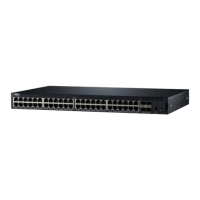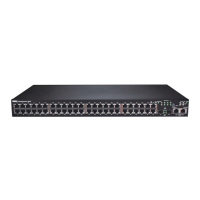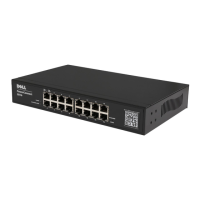Network Administration: Spanning Tree and LAG 187
FILE LOCATION: C:\Users\gina\Desktop\Checkout_new\Dell Astute\User
Guide\Dell_Astute_Network_Admin_STP.fm
DELL CONFIDENTIAL – PRELIMINARY 8/9/16 - FOR PROOF ONLY
MST region appears as a single bridge.
For more information on configuring Multiple STP, see
"MSTP Properties
"
on page 193.
Global Settings
To enable STP and select the STP mode on the device:
1
Click
Network Administration > Spanning Tree and LAG > Spanning
Tree
>
Global Settings
.
The currently-defined settings are displayed.
2
Click
Edit
and enter the fields:
–
Spanning Tree State
— Enable Spanning Tree on the device.
–
STP Operation Mode
— Select the STP mode enabled on the device.
The possible options are:
•
Classic STP
— Enables Classic STP on the device.
•
Rapid STP
— Enables Rapid STP on the device. This is the
default value.
•
Multiple STP
— Enables Multiple STP on the device.
–
BPDU Handling
— Select how Bridge Protocol Data Unit (BPDU)
packets are managed when STP is disabled on the port/device. BPDUs
are used to transmit spanning tree information. The possible options
are:
•
Filtering
— Filter BPDU packets when spanning tree is disabled
on an interface.
•
Flooding
— Flood BPDU packets when spanning tree is disabled
on an interface.
–
Path Cost Default Values
— Select the method used to assign default
path costs to STP ports. The possible options are:
•
Short
— Specifies 1 through 65,535 range for port path costs.
•
Long
— Specifies 1 through 200,000,000 range for port path
costs.

